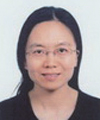|
|
      
2013 Asia-Pacific Conference on Synthetic Aperture Radar
"Overcoming the Hardships: Responding to Disasters with SAR" |
Schedule
Tuesday 24 September 2013
Plenary session I 9:00-10:20 Convention Hall 300
9:00-9:20
Dr. Masanobu Shimada, JAXA, Japan
"New Earth Observation Scenario using the ALOS-2 with the L-band high-resolution
and fullpolarimetric SAR"
9:20-9:40
Dr. Wen Hong, MITL-IECAS, P.R. China
"Research Progresss on Multidimensional Space Joint-observation SAR"
9:40-10:00
Dr. Young Kil Kwag, Korea Aerospace University, Korea
"Spaceborne Synthetic Aperture Radar in Korea"
10:00-10:20
Dr. Manfred Zink, DLR, Germany
"TanDEM-X: Operational DEM Generation and Pre-Cursor for Future SAR Missions"
Plenary session II 10:50-11:30 Convention Hall 300
10:50-11:10
Mr. Robertus Heru Triharjanto, LAPAN, Indonesia
"System Design of LAPAN-CHIBA Microsatellite"
11:10-11:30
Dr. Wolfgang-Martin Boerner, UIC, USA
" The challenge for the still unresolved development of Multi-band Equatorially Orbiting POLSAR
satellite sensors - an integral task for the major space-sar technology centers"
Abstracts
New Earth Observation Scenario using the ALOS-2 with the L-band highresolution
and full-polarimetric SAR
 Dr. Masanobu Shimada (Earth Observation Research Center, Japan Aerospace
Exploration Agency, Japan) Dr. Masanobu Shimada (Earth Observation Research Center, Japan Aerospace
Exploration Agency, Japan)
Abstract
During more than 20 years JAXA history on spaceborne and airborne SAR,
L-band SAR has been adopted under the unique mission goal, i.e., the global
observation. Over the JERS-1 SAR’s essential findings on the surface deformation
and the deforestation monitoring, both of which owe to the signal penetration
of vegetation at L-band, ALOS has achieved the wider and more comprehensive
global understanding of the earth phenomena covering four spheres, i.e.,
largely biosphere, geosphere, cryosphere, and the hydrosphere, and it also
contributed the disaster monitoring. On the other way, the airborne SAR
has been developed and utilized for investigating the future technology
development and the applications, i.e., polarimetric application and the
interferometric application.
Under these preparative facts, the ALOS-2 is being developed and prepared
for near future launch and for more confidential observation of the four
spheres using the improved SAR (resolution, polarization, and the qualities)
and the systematic observations. In this presentation, the ALOS-2 scientific
outcome will be presented.
Masanobu Shimada received the BS and MS degrees in aeronautical engineering from Kyoto
University in 1977 and 1979, and the PhD degree in electrical engineering
from the University of Tokyo in 1999 He joined the National Space Development
Agency of Japan (NASDA, former Japan Aerospace Exploration Agency (JAXA))
in 1979, and he designed NASDA scatterometer by 1985. From 1985 to 1995,
he developed data processing systems for optical and SAR data (MOS-1, SPOT,
and JERS-1) at the Earth Observation Center. He was a one-year visiting
scientist at the Jet Propulsion Laboratory in 1990. After launch of JERS-1
in 1992, he was in charge of the JERS-1 SAR calibration and validation.
From 1995, he has been assigned duties at Earth Observation Research Center
(EORC), where he is in charge of the JERS-1 Science project (Global rainforest
and boreal forest mapping project and SAR interferometry project). He also
developed a polarimetric airborne SAR (Pi-SAR-L) and calibrated the Ocean
Color Temperature Scanner and AVNIR of ADEOS. In the late 1990s he initiated
the ALOS science project, which has calibration and validation of the ALOS
sensors. He mainly focuses on the PALSAR calibration, validation, and application.
He also initiated the Kyoto and Carbon Initiative project for monitoring
the forest and wetland using the time series PALSAR mosaics. His main outputs
are the global SAR mosaics showing the annual deforestation change and
largescale land surface deformations. He has been a Principal Researcher
of JAXA and leading the ALOS and ALOS-2 science projects. His current research
interests are high resolution imaging for spaceborne and airborne SARs
(PALSAR-2 and Pi-SAR-L2), calibration and validation, and SAR applications
including polarimetric SAR interferometry.
Research Progresss on Multidimensional Space Joint-observation SAR
 Dr. Wen Hong (MITL-IECAS, P.R. China) Dr. Wen Hong (MITL-IECAS, P.R. China)
Abstract
With the application requirement and technology development, the necessity
and tendency of Synthetic Aperture Radar (SAR) imaging within the framework
of multidimensional space joint-observation, which are polarimetry, frequency,
angle, time series and etc., evoke catholic interests in SAR imaging research
nowadays. Recent research progress on the Multidimensional Space Joint-observation
SAR (MSJosSAR) in the National Key Lab of Microwave Imaging Technology,
Institute of Electronics, Chinese Academy of Sciences (MITL-IECAS) is reported
in this talk, where the a sphere cluster coordinate system is defined as
the modeling basis on the demand of information fusion for SAR multidimensional
space joint-observation. Further more, the advantage of MSJosSAR is revealed
by using Kronecker product decomposition for better understanding of target
scattering mechanisms, with the hypothesis and basic framework on which
the MSJosSAR signal processing relies on. Tentative studies on multi-layer
material with PolinSAR technique, anisotropic scattering mechanisms with
multi-directional observation (i.e. circular SAR technique), and instantaneous
time-variant target with array SAR technique are demonstrated as the initial
verification of the above defined hypothesis and framework. Finally, the
value of joint observation space numbers for typical SAR configurations
is enumerated, followed by the perspective discussions on the future work
for MSJosSAR study.
Wen Hong got her Ms.D and Ph.D in Northwestern Polytechnical Univ.(NPU) and Beijing
Univ. of Aeronautics and Astronautics(BUAA), P.R.China, in 1993 and 1997
respectively. From 1997 to 2002, she served as a faculty staff in the Dept.
of E.E., BUAA. In between, she was a guest scientist for one year in the
Microwaves and Radar Institute in German Aerospace Center (DLR-HF) in 1998.
She joined the Institute of Electronics, Chinese Academy of Sciences (IECAS)
since 2002 till now. As a researcher and a Ph.D. candidate program supervisor
in the IECAS, her research interests are Pol/PolinSAR data processing,
3D SAR imaging, sparse signal processing in microwave imaging and etc.
She was the Executive Chair for the Dragon3 Advanced Training Course on
Land Remote Sensing (MOST-ESA) in 2012, and she acts now as the Vice Chair,
IEEE GRSS Beijing Sector.
Spaceborne Synthetic Aperture Radar in Korea
 Dr. Young Kil Kwag (School of Electronics and Telecomm. Engineering, Korea
Aerospace University) Dr. Young Kil Kwag (School of Electronics and Telecomm. Engineering, Korea
Aerospace University)
Abstract
Due to the global climate change, natural disasters are continuously threatening us all over the world. Today’s high resolution, polarimetric and interferometric SAR system is the most powerful all-weather sensors for monitoring the earth environment and security territory under the severe weather environments. Korea is now ready for launching the first spaceborne SAR satellite, KOMPSAT-5, soon or later this year. This satellite will be delivered to low Earth orbit for all-weather day-or-night monitoring around Korean peninsula. Though the launching schedule has been delayed by more than two years, this time we expect to see the first beautiful SAR image from space at the time of the APSAR 2013. In this talk, I will briefly look back on the previous APSAR 2011 for the advancement of the APSAR community. And I will give an overview of the SAR program and mission and system characteristics of the KOMPSAT-5. As an application, finally, GOLDEN mission will be introduced such as Geographic information system, Ocean management, Land management, Disaster monitoring, ENvironment monitoring.
Young Kil Kwag is a full professor of the School of Electronics and Telecomm.Eng.,and
Director of Radar Research Institute, a Korea Aerospace University (KAU).
He was a General Chair of APSAR 2011(www.apsar2011.org) in Seoul, Korea.
He was a founding president of the Korea Radar Society of KEES, and also
he was a founding chairman of the Korea Aerospace Electronics Society of
KSAS. He is currently the chair of IEEE AESS Seoul Chapter. Since 1990,
he has been serving as a co-chair, session chair, reviewer and referee
of the international radar conference of IEEE/IET, AESS, EUSAR, APSAR.
Prior to joining the Korea Aerospace University in 2001, he has been with
Agency for Defense Development(ADD), Korea,over 25 years as a division
head and project manager of radar/SAR systems and radar signal processing.
From 1997 to 1999, he was a joint project manager in Matra Marconi Space
(MMS), UK, for the first spaceborne synthetic aperture radar (SAR) system
design and development.He was a visiting professor of the Oxford University
in UK from Sept. 2007 to Aug. 2008. Since 2013, he has been appointed as
a senior member of the aerospace subcommittee in the National Science &
Technology Council, Ministry of Science, ICT & Future Planning, Korea.
Prof. Kwag received BS from National Aviation University in 1976, MS in
electronics engineering from Korea Advanced Institute of Science (KAIST),in
1981, and Ph.D in electrical engineering from Ohio University, Ohio, USA
in 1987. His areas of research interest include the radar system design,
radar signal processing, synthetic aperture radar imaging, multi-sensor
remote sensing, collision avoidance radar, and adaptive array and interference
rejection.
TanDEM-X: Operational DEM Generation and Pre-Cursor for Future SAR Missions
 Dr. Manfred Zink (Microwave and Radar Institute, German Aerospace Center
(DLR), Germany) Dr. Manfred Zink (Microwave and Radar Institute, German Aerospace Center
(DLR), Germany)
Abstract
TanDEM-X, a single-pass SAR interferometer with adjustable baselines in
across- and in along-track directions was formed by adding a second, almost
identical spacecraft to TerraSAR-X and flying the two satellites in a closely
controlled formation. With typical across-track baselines of 150 to 500
m a global Digital Elevation Model with 2 m relative height accuracy at
a 12-m posting is being generated. Beyond this primary mission objective,
TanDEM-X is also an important pre-cursor for future SAR satellite formations
allowing demonstrating novel SAR techniques, with focus on multistatic
SAR, polarimetric SAR interferometry, digital beam forming and super resolution.
Flying in a Helix geometry the orbits never cross and the satellites can
be arbitrarily shifted along their orbits enabling a safe spacecraft operation.
For synchronization a dedicated inter-satellite X-band link has been established
via mutual exchange of radar pulses between the two satellites. To mitigate
the risk of damage due to illumination of one satellite by the radar of
its partner, the transmission of radar signals has to be suppressed at
specific arguments of latitude. Precise determination of the interferometric
baseline is performed by a double differential evaluation of GPS carrier
phase measurements and calibrated using interferometric acquisitions over
reference areas. Additional systematic height error sources include uncompensated
internal delays in the SAR instruments, the formation of the bistatic replica
for both synchronization and bistatic imaging, as well as residual errors
in the bistatic SAR processing. TanDEM-X has demonstrated the feasibility
of a bistatic interferometric radar mission using satellites in close formation
flight and delivers an important contribution for the conception and design
of future SAR missions. One example is Tandem-L, a mission proposal for
monitoring dynamic processes on the Earth surface with unprecedented accuracy.
Manfred Zink received the Dipl.-Ing. degree in physics from the Technical University
of Graz, Austria, in 1987, and the Dr.-Ing. degree from the University
of Stuttgart, Germany, in 1993. In 1988, he joined the Microwave and Radar
Institute, German Aerospace Center (DLR). He ha pioneered the calibration
techniques for both air- and spaceborne SAR sensors. He was the Lead X-SAR
Calibration Engineer for both SIR-C/X-SAR missions in 1994 and for the
SRTM mission in 2000. In August 2000, he joined the European Space Agency
(ESA) and took over the responsibility for the calibration/validation of
the ASAR onboard ENVISAT. After successful in-orbit commissioning of the
ASAR, he was appointed as the Principal System Engineer for ESA’s TerraSAR-L
Program. In May 2005, he returned to DLR’s Microwaves and Radar Institute,
where he is currently heading the Satellite SAR Systems Department. He
is also managing the TanDEM-X Mission with the primary objective to generate
a globally consistent DEM of unprecedented accuracy. Since 1991 he has
been an active member of the CEOS Working on Calibration and Validation,
SAR Subgroup and since 2011 he has been chairing this group. He received
the DLR Science Award in 1991 and the EUSAR Best Paper Award in 2008. In
2012 he and his colleagues were presented with the IEEE W.R.G. Baker Prize
Paper Award and have been nominated for the “Deutscher Zukunftspreis” -
Federal President’s Prize for Technology and Innovation. He is the general
chairman of the European SAR conference (EUSAR) 2014.
System Design of LAPAN-CHIBA Microsatellite
 Dr. Robertus Heru Triharjanto (Center for Satellite Technology, Indonesian
Institute of Aeronautics and Space (LAPAN), Indonesia) Dr. Robertus Heru Triharjanto (Center for Satellite Technology, Indonesian
Institute of Aeronautics and Space (LAPAN), Indonesia)
Abstract
Development of compact and low power consumption synthetic aperture radar
(SAR) by Center for Environmental Remote Sensing (CEReS), Chiba University
make it feasible to bring such payload in microsatellites. Under collaboration
with Center of Satellite Technology, Indonesian Institute of Aeronautics
and Space (LAPAN), the concept LAPAN-CHIBA microsatellite is being developed.
The mission of the satellite is for land cover mapping, disaster monitoring,
Cryosphere monitoring, and oceanographic monitoring. In land cover mapping,
the mission is to classify the forest and non-forest area, estimation of
tree trunk height, and mangrove area monitoring. The system design of the
microsatellite is presented in this paper. The resulted system design shows
that the satellite could perform the mission while meeting the dimensional
and weight requirement of most auxiliary payload launches. The design also
show that the satellite will have sufficient power to operate the payload
during its pass in Indonesia and Japan
Robertus Heru Triharjanto received the BS and MS degrees in Aerospace Engineering from North Carolina
State University in 1995, and Texas A&M University in 1997, respectively.
From 1995 to 1997, he was a research assistant in the Department of Aerospace
Engineering, Texas A&M University. He joined the Indonesian Aeronautics
and Space Agency (LAPAN) in 1997. He was a design and flight test engineer
for LAPAN’s sounding rocket (1998-2003, 2006-2008). From 2004 to 2007,
he served as team leader of the LAPAN-TUBSAT assembly, integration and
test, and launch campaign team. Since 2009, he has been head of the satellite
bus technology division at LAPAN’s center for satellite technology. From
1998 to 2003, he was a Member of National Transportation Safety Committee
as lead engineering investigator for several major aircraft accidents in
Indonesia. He also received the professional trainings as Boeing 737-300
Airframe and Power plant (Garuda Aviation Training, Jakarta, Indonesia,
2000), Satellite Design (China Academy for Space Technology, Harbin, China,
2000), Aviation Accident Investigation (Institute of Aviation Safety, Stockholm,
Sweden, 2001), and System Level Satellite Design (ISRO Satellite Center,
Bangalore, India, 2003).
The challenge for still unresolved development of Multi-band Equatorially
Orbiting POLSAR satellite sensors - an integral task for the major space-SAR
technology centers world-wide
 Dr. Wolfgang-Martin Boerner (University of Illinois at Chicago, USA) Dr. Wolfgang-Martin Boerner (University of Illinois at Chicago, USA)
Abstract
With the relentless increase in population density, the anthropogenic expansion
into natural terrestrial hazard zones has become irreversible resulting
in ever more catastrophic disasters, not only in the Asia-Pacific region
more so within the entire tropical belts engulfing Mother Earth. Thus not
only the Indonesian-Pacific Islands, so also South America, Africa and
back via the Indian Ocean Islands to Asia-Pacific, these natural events
like volcano eruptions, earthquakes with emerging tsunami, cyclones and
severe down pours have caused havoc, loss of lives, destruction of infrastructure
and above all intentional manmade interference resulting in the deterioration
of pristine tropical jungle forests. Matters have become so bad that proposals
are forthcoming for equating oil-palm mono-cultures with pristine tropical
jungle habitat by greedy developers mostly exterior to local environmental
regions suffering helplessly from such criminal machinations. What is required
is around-the-clock local and wide-area surveillance and remote sensing
of the vegetative cover for which first well designed optical equatorially
orbiting satellite sensors had been developed but their successful implementation
failed because of the ever increasing cloud, precipitation, humidity and
aerosol cover within the entire equatorial belt of +/- 15* ~ 20* latitude
rendering penetration at optical wavelength mostly ineffective. Hence,
we must take recourse to microwave sensing, and implement radar and synthetic
aperture sensors from air and space operational at day & night independent
of weather; and the sensors especially suited are the fully polarimetric
POL-SAR sensors developed for satellite remote sensing by the major SAR
technology development centres worldwide. The challenge is thus to develop
equatorially orbiting SAR, preferably POL-SAR satellite sensors within
the desirable P/L/S/C/ X/Ka multi-bands, which does pose severe technological
problems due to the steep incidence-angle illumination on one hand, and
because of the fact that the major SAR Technology Designers reside far
outside the equatorial belt not being excited about SAR sensor development
for the tropical belt anywhere. Therefore, we need to mobilize and draw
full responsible attention of the main SAR Development Centres worldwide
such as NASA/JPL, ESA/ESTEC, JAXA/EORC, CSA/SAR, DLR/SAR, DSTO/SAR, ISRO/SAC,
INPE/SERE plus NTU-Temasek, NCU-CSRSR, LAPAN/RANCABUNGUR, and so on; joining
forces and strongly contributing to a viable multi-band general bi-static
(including cross/along)-track POLSAR sensor technology, well suited for
equatorial monitoring within orbits of +/- 20* latitude. Once this urgent
goal is achieved, local regions could be observed daily up to 12 to 14
times, covering both the land and ocean regions essential for environmental
protection and meteorological forecasting, respectively, on a hitherto
unprecedented global level. This Plenary Challenge for APSAR-2013 fits
well its chosen theme on “Disaster Monitoring and Prevention”, and reaches
beyond the Asia-Pacific region in that the hazard phenomena generated within
the Equatorial Tropical Belt affect us all worldwide.
Wolfgang-Martin Boerner was born on 1937 July 26 in Finschhafen, Papua-New-Guinea/South-Pacific;
he received his Dipl.-Ing. (M.S.E.E.) degree in Communications &Electromagnetic
Wave Engineering from the Technische Universität München, Bavaria, Germany
in 1963; and his Ph.D. degree in Electromagnetic Engineering Sciences from
the Moore School of Electrical Engineering, The University of Pennsylvania,
Philadelphia, PA in 1967. From 1967 to 1968 he was a Research Assistant
Engineer with the EECS Radiation Laboratory of the University of Michigan,
Ann Arbor, MI; and then joined the University of Manitoba at Winnipeg,
Canada where he was strongly active in across-Canada research activities
on the advancement of inverse problems in aeronomy and radar remote sensing
and surveillance. Since 1978, he has been a Professor at the Department
of Electrical & Computer Engineering (formerly EECS), the University
of Illinois at Chicago, and Director of its Communications, Sensing and
Navigation Laboratory. While at UIC Professor Boerner was awarded the Alexander
von Humboldt Senior US Scientist, the Japan Society for the Promotion of
Science Senior US Scientist, and the US Navy Distinguished Senior Professor
awards; he is a University of Illinois Distinguished Senior Professor,
and he was awarded the Doctor Honoris Causa (Dr. H. C.) of the Tomsk State
University Cluster in Tomsk, West Siberia on 2000 October 12, of the University
of Rennes 1, Bretagne, France on 2003 April 04, and of the Friedrich-Alexander-University
of Erlangen-Nuremberg, Germany on 2003 April 11 - all in recognition for
his profound contributions to the advancements of Electromagnetic Vector
Inverse Scattering, Radar Polarimetry, Interferometry and Tomography. He
is a Corresponding Member of the Saxonian Academy of Science at Leipzig,
Germany and of AKA-TECH of Germany. For his contributions toward linking
international research centers of Oceania & East/Austral-Asia via the
Americas with Eurasia & Europe, Prof. W-M. Boerner was honored with
the distinguished IEEE-GRSS Outstanding Services Award for 2005 and that
of IECE-SANE for 2007; and most recently with a Special Recognition on
the occasion of the 50th anniversary of IEEE-GRSS during the IGARSS-2012
at Munich, Germany for “his extraordinary technical contributions to the
advancement of radar remote sensing and valued services to the Geoscience
and Remote Sensing Society of IEEE”.
|
|








